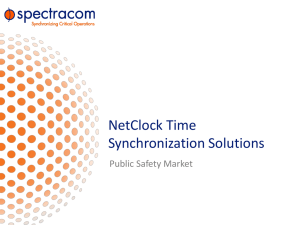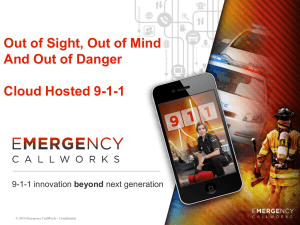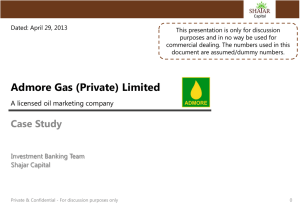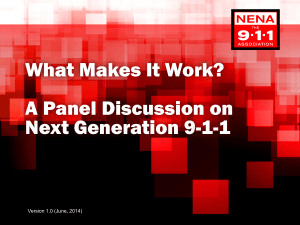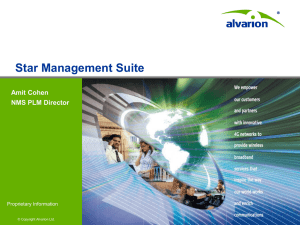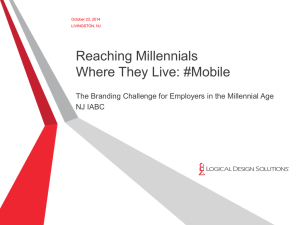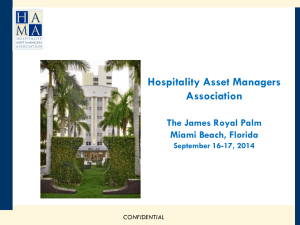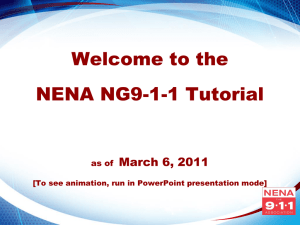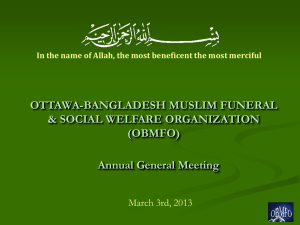Gulf Coast NENA - Text to 9-1-1
advertisement
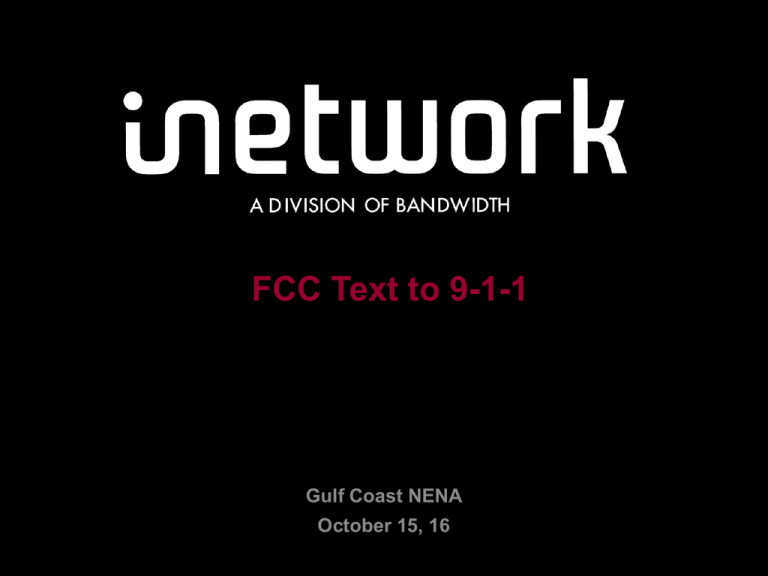
FCC Text to 9-1-1 Gulf Coast NENA October 15, 16 Confidential 1 Confidential 2 Text to 9-1-1 – inetwork’s Participation • A topic in the FCC’s Public Safety and Homeland Security Bureau’s NG9-1-1 Notice of Proposed Rule Making (PSHS NG9-1-1 NPRM) • At inetwork’s meeting with the FCC in February 2011, 80% of the focus was on NG9-1-1. A few thoughts at the end on Text to 9-1-1 • Comments on Text to 9-1-1. In January 2012 we were asked to discuss our thoughts in more detail with special emphasis on a few aspects. • March 2012 another meeting with the PSHSB to discuss topics they requested. Focus was on the deaf and hard of hearing • Several subsequent filings especially related to costs Confidential 3 inetwork’s Initial Proposal • Service for the deaf and hard of hearing community only • Text to 9-1-1 Clearinghouse at a national level − All carriers deliver calls to a central clearinghouse − Clearinghouse determines destination state and selected delivery mechanism − Clearinghouse delivers text messages to the state. • Single provider under contract to the FCC • TRS/VRS funds to be used for service to the deaf and hard of hearing • Allows the states to select the method of delivery and timing of rollout − Centralized handling possible − Change of methods allowed − Encouragement to migrate to NG9-1-1 Confidential 4 Response to inetwork’s proposal • Key concepts embraced and will likely be part of the order (if there is one) − Clearinghouse − Several text delivery options − State/ECD Opt-in • Timeline to develop an RFP and execute the process too long • Expansion to all subscribers makes funding proposal unworkable Confidential 5 Possible Regulatory Scenarios (my crystal ball) • Interim (pre-NG9-1-1) rules will be established: Yes - 75% probability • Regulatory mandate placed on the wireless carriers: Yes -75% probability • Mandate extends to all subscribers – Yes – 75% • Regulatory mandate placed on Over-The-Top texting services: No 95% probability • Regulatory mandate placed on States: No - 95% probability • Mandate includes delivery to the state: Yes – 75% probability • Mandate includes delivery to the PSAP: Yes – 75% probability • Mandate for service provider collaboration: Yes – 51% probability • Best guess on release of regulations: Q1 2013 – 51% probability Confidential 6 Possible Regulatory Scenarios Continued • Wireless carriers obligated to provide multiple text delivery mechanisms − Text to TTY: Yes – 95% probability − Text to NG9-1-1: Yes – 95% probability − Text to internet server: Yes – 75% probability − Text to relay service: No – 75% probability • State and Local 9-1-1 Authorities Participation − Mandate: No - 95% probability − Opt in: Yes - 75% probability Confidential 7 National Text to 9-1-1 Clearinghouse • Exposes a standard interface to OSPs that remains constant throughout the evolution to NG91-1 • Allows states to choose the text to 9-1-1 solution that they feel is most appropriate for their population now • Allows states to migrate to other solutions as they become available and to NG9-1-1 Confidential 8 9-1-1 Text to TTY Confidential 9 9-1-1 Text to Internet Delivery Confidential 10 Text to NG9-1-1 Confidential 11 We are a NG9-1-1 State Right? Yes but… • A true NG9-1-1 system is end-to-end − Carriers interrogate the ECRF for routing information and then deliver the message via SIP directly to the ESRP − Text message stays in SIP through all routing and diversions − Text is delivered to NG9-1-1 Call Handling System • • Location object in the SIP body decoded by the CPE New window pops up on the display to facilitate interaction All of this is targeted in ANGEN Phase 4 Confidential 12 Today’s Reality • A true NG9-1-1 system is end-to-end − Carriers interrogate the ECRF for routing information and then deliver the message via SIP directly to the ESRP Wireless carriers are delivering calls via SS7 to the Legacy Network Gateways − Text message stays in SIP through all routing and diversions Messages stay in SIP from the inside of the Legacy Network Gateways to the handoff to the PSAP CPE − Text is delivered to NG9-1-1 Call Handling System • • Location object in the SIP body decoded by the CPE Some CPE in the state is ready to take SIP but not a full NG9-1-1 interface New window pops up on the display to facilitate interaction Most CPE aren’t ready to to identify an incoming test message and pop a window All of this is targeted in ANGEN Phase 4 Confidential 13 So What’s The Plan? • Well, it’s up to the Alabama Wireless Board. • Our technical recommendation − Initially, implement the text to internet server method. • • • • Text messages are collected at a state level Deposited into a server PSAP is notified of arrival PSAP uses browser to access server and exchange text messages with “caller” • The operations challenge − How to organize? Does every dispatcher get trained? − What is the likely volume? − And all the other policies that need to be established…. Confidential 14 9-1-1 Text to Internet Delivery Confidential 15 Reducing the Anxiety • Once you see it in operation, many of your concerns will be reduced • You re not in this alone! Every agency will need to address it • You won’t be asked to do anything without a great deal of thought and planning − Public Safety and Homeland Security Bureau are sensitive to these issues − NENA and APCO are working closely with the Bureau Confidential 16 Suggested Next Steps • Get familiar with the topic • Invite wireless carriers, vendors, and other stakeholders to speak. Webinars? • Get engaged and file comments. − The wireless carriers are very active − Vendors are also activity shaping rules − Some 9-1-1 authorities are engaged. Read their filings • inetwork will continue to be engaged in the process and make proposals to the AWB for implementation in Alabama if/when rules are promulgated Confidential 17 Questions Confidential 18
